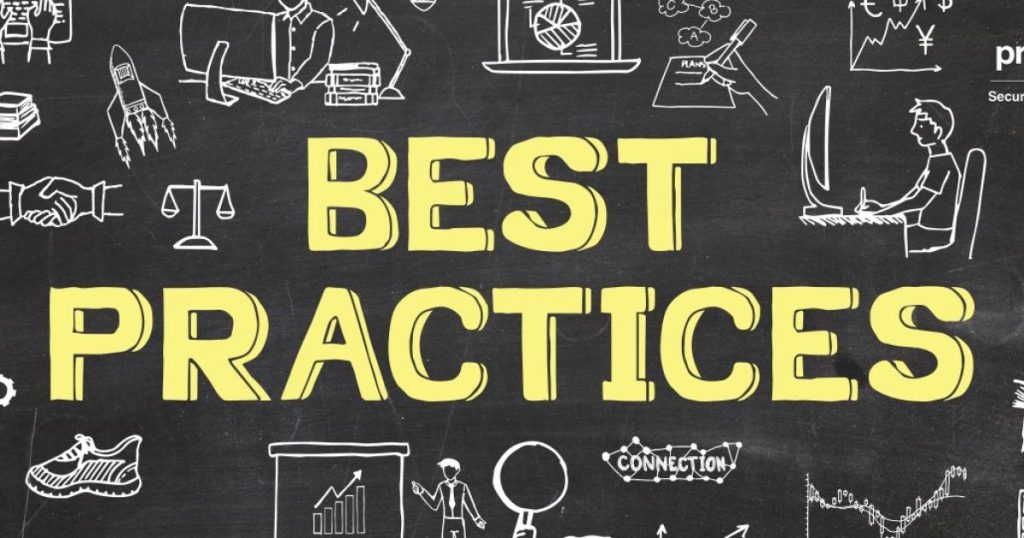Access controls play a crucial role in maintaining the security and integrity of blockchain networks, particularly in permissioned blockchains where access is restricted to a select group of participants. In this article, we will explore the importance of implementing access controls in permissioned blockchains and discuss various mechanisms and best practices for ensuring secure and controlled access.
Introduction
Permissioned blockchains are designed to restrict access to a predefined group of participants, ensuring that only authorized entities can participate in the blockchain network. Implementing access controls is essential to prevent unauthorized access, protect sensitive information, and maintain the overall security and trustworthiness of the blockchain system.
Access Control Mechanisms
Several mechanisms can be employed to implement access controls in permissioned blockchains:
1. Identity Management
Effective identity management is the foundation of access control in permissioned blockchains. Each participant in the network is assigned a unique digital identity that authenticates their access and interactions within the blockchain. This can be achieved through the use of cryptographic keys, digital certificates, or other identification protocols. Identity management ensures that only authorized entities are granted access to the blockchain network.
2. Role-Based Access Control (RBAC)
RBAC is a widely used access control model that assigns permissions to users based on their roles within the blockchain network. Different roles are defined, each with a set of associated privileges and access rights. This approach simplifies access control management by assigning permissions to roles rather than individual users, making it easier to manage and enforce access controls in a scalable manner.
3. Access Control Lists (ACLs)
ACLs provide a more granular level of access control by explicitly defining access permissions for individual users or user groups. Access control lists specify which actions or operations a user can perform within the blockchain network. By maintaining and enforcing these lists, administrators have precise control over who can read, write, or modify data on the blockchain.
4. Smart Contracts
Smart contracts can be utilized to enforce access controls within permissioned blockchains. By embedding access control logic directly into the smart contracts, the blockchain network can automatically validate and enforce the permissions assigned to different participants. Smart contracts can define access rules based on various conditions, such as verifying the identity of the user or checking their role or permissions before executing specific actions.
5. Encryption and Data Protection
Encryption techniques can be employed to protect sensitive data stored on the blockchain. Access controls can include encryption of data at rest and in transit, ensuring that only authorized parties can decrypt and access the information. By encrypting data, even if an unauthorized entity gains access to the blockchain, the data remains secure and unintelligible.
Best Practices for Implementing Access Controls

Implementing access controls in permissioned blockchains requires careful consideration of best practices:
1. Comprehensive Access Control Policy
Develop a clear and comprehensive access control policy that outlines the roles, privileges, and permissions granted to different participants. This policy should define the procedures and rules for granting and revoking access, as well as the processes for managing identities and enforcing access controls.
2. Regular Access Reviews
Conduct regular access reviews to ensure that access permissions align with the participants’ roles and responsibilities. This helps identify any unauthorized access or potential security gaps, allowing administrators to take appropriate actions to rectify the issues promptly.
3. Strong Authentication Mechanisms
Implement robust authentication mechanisms, such as multi-factor authentication (MFA), to verify the identity of participants before granting access. MFA adds an extra layer of security by requiring users to provide multiple pieces of evidence, such as a password and a unique verification code sent to their mobile device.
4. Ongoing Monitoring and Auditing
Continuously monitor access logs and conduct regular audits to detect any suspicious activities or unauthorized access attempts. Monitoring and auditing provide insights into access patterns, identify potential security breaches, and enable prompt response to mitigate risks.
5. Regular Security Updates and Patches
Stay up to date with security updates and patches for the underlying blockchain platform and associated software. Applying patches promptly helps address known vulnerabilities and ensures that the access control mechanisms remain robust and effective.
Governance and Access Controls
Governance plays a crucial role in defining and enforcing access controls in permissioned blockchains. Governance frameworks determine the rules, policies, and procedures for managing access permissions, identity management, and overall network security. Establishing a governance structure that involves stakeholders and ensures transparency and accountability is essential for maintaining effective access controls. Through governance mechanisms, decisions regarding access control policies, updates, and changes can be made collectively, ensuring alignment with the needs and objectives of the blockchain network.
External Integrations and Interoperability
Permissioned blockchains often need to integrate with external systems and interact with other blockchain networks or traditional databases. Ensuring access controls are maintained during these integrations is critical to preserving the security and integrity of the blockchain. Access control mechanisms should be designed to accommodate external interactions while maintaining the necessary levels of authorization and data protection. Standards and protocols for interoperability should be considered to facilitate secure and controlled data exchange between different systems.
Compliance and Regulatory Considerations
Implementing access controls in permissioned blockchains requires adherence to relevant compliance and regulatory requirements. Depending on the industry and jurisdiction, there may be specific regulations governing data protection, privacy, and access management. Access controls should be designed and implemented to align with these regulations, ensuring that sensitive data is appropriately secured and accessed only by authorized entities. Collaboration with legal and compliance experts is crucial to navigate the complex landscape of regulatory requirements and ensure compliance while maintaining the benefits of permissioned blockchains.
Continuous Improvement and Adaptation
Access controls should be treated as an ongoing process that requires continuous improvement and adaptation. As new security threats emerge or the blockchain ecosystem evolves, access control mechanisms need to be updated and refined to address these challenges. Regular assessments and risk analyses can help identify vulnerabilities or areas for improvement, enabling proactive adjustments to access controls. Staying informed about emerging security practices, technologies, and industry standards allows for the implementation of the most effective access control measures in permissioned blockchains.
Education and Training
Effective implementation of access controls in permissioned blockchains requires education and training for network participants. Users need to understand the importance of access controls, their responsibilities in maintaining security, and how to interact with the blockchain network securely. Training programs and resources should be provided to enhance participants’ awareness of best practices, security protocols, and potential threats. By fostering a culture of security and promoting user education, the overall effectiveness of access controls in permissioned blockchains can be significantly improved.
Audit Trails and Immutable Records
In permissioned blockchains, access controls should be complemented by the implementation of audit trails and immutable records. Audit trails capture a detailed record of all access attempts, modifications, and transactions within the blockchain. These trails provide transparency and accountability, enabling the identification of any unauthorized access or suspicious activities. Immutable records ensure that once data is added to the blockchain, it cannot be modified or tampered with, providing a trustworthy and verifiable history of access and changes.
Segregation of Duties
Segregation of duties is an important principle in access control for permissioned blockchains. It involves separating responsibilities among different participants to prevent any single individual or entity from having excessive control or authority. By assigning distinct roles and access privileges, the risk of malicious actions or unauthorized access is reduced. Segregation of duties also helps distribute responsibilities, enhance accountability, and minimize the potential impact of a security breach or insider threat.
Access Control Testing and Penetration Testing
Regular testing and evaluation of access controls are essential to ensure their effectiveness and identify any vulnerabilities or weaknesses. Access control testing involves assessing the implementation and enforcement of access controls within the blockchain network. Penetration testing, on the other hand, simulates real-world attacks to identify potential security flaws and breaches in the access control mechanisms. By conducting these tests regularly, blockchain network administrators can proactively address any weaknesses and enhance the overall security of the system.
Incident Response and Contingency Planning
Even with robust access controls in place, security incidents may still occur. Therefore, it is crucial to have an incident response plan and a contingency plan in place. An incident response plan outlines the procedures for detecting, analyzing, and responding to security incidents promptly. This includes measures such as isolating affected systems, investigating the incident, and implementing remediation steps. A contingency plan prepares for unexpected events and establishes procedures for system recovery, data backup, and alternative access methods in case of disruptions or failures.
Regular Security Audits and Compliance Assessments
Regular security audits and compliance assessments are necessary to evaluate the effectiveness and compliance of access controls in permissioned blockchains. These audits assess the adherence to access control policies, identify any non-compliance issues, and recommend improvements. Compliance assessments ensure that the access controls align with relevant regulatory requirements and industry best practices. By conducting these assessments, organizations can demonstrate their commitment to security and compliance while continuously improving their access control mechanisms.
Conclusion
Implementing access controls is paramount in permissioned blockchains to safeguard the integrity, confidentiality, and availability of the network. Through identity management, role-based access control, access control lists, smart contracts, and encryption, permissioned blockchains can enforce secure and controlled access. Adhering to best practices, such as comprehensive access control policies, regular reviews, strong authentication, monitoring, and regular security updates, ensures that access controls are effective and aligned with the evolving security landscape.





